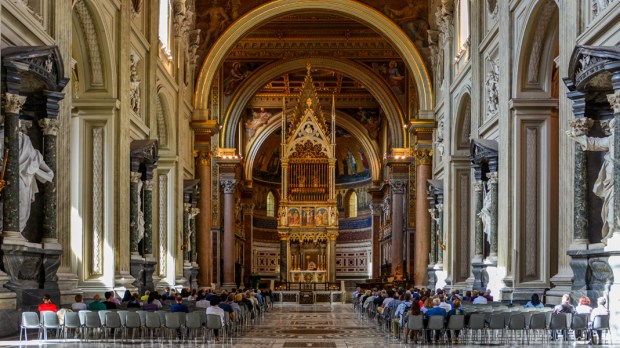Lenten Campaign 2025
This content is free of charge, as are all our articles.
Support us with a donation that is tax-deductible and enable us to continue to reach millions of readers.
A team of archaeologists drawn together from Newcastle University, UK, the universities of Florence and Amsterdam and the Vatican Museums, led by Professor Ian Haynes, has discovered a vast network of subterranean passages that shed light on the transformation of Rome into a Christian empire. St John Lateran, the pope’s own cathedral, was originally constructed as by Constantine in the 4th century, but now it appears the site had already been in use for centuries before then.
In order to make room for the monumental church, which would have dominated the Roman skyline at the time, Constantine leveled the Castra Nova (New Fort), which was the headquarters for the imperial horseguard. The Castra Nova had been constructed by emperor Septimius Severus, who had swept away palatial houses of several wealthy Roman citizens in order to make room for the stables.
The repeated process of demoliton and construction has left a wealth of history buried under St. John Lateran, which the Lateran Project team is excavating and studying. Now they are attempting to bring the site back to life, using digital mapping, ground penetrating radar, and 3D visualization techniques to produce images of how the site may have looked. Haynes also says he would like to create a virtual environment for digital tours.
Working on a site that covers over four hectares (40,000 sq meters), they have become one of the first projects to utilize terrestrial laser-scanning in such a large area. The fruits of their labors have allowed them to reproduce the shapes of the buildings that once stood on the site.
In an exclusive interview with Current World Archaeology, Haynes described the environment in which his team works:
“There is a large area of space underneath the Lateran that it is possible to walk or crawl through. The archaeology is at varying levels below — at the deepest we were 8.5m below modern ground surface. To access some of the spaces we worked with a group called Roma Sotteranea who specialize in working on buried sites and use exactly the same equipment and techniques as potholers. In some places, it was necessary to rotate the teams on a half hourly basis because otherwise it just becomes stifling.”
Haynes believes the construction of the cathedral marked a pivotal change in Rome and paved the way for more places of worship to be built, transforming Rome into the church-filled city it is today. The Castra Nova was leveled shortly after the Battle of Milvian Bridge in 312. Just 12 years later, in 324, St. John Lateran Cathedral was consecrated. Work on St. John Lateran was begun some years before even the original St. Peter’s Basilica.
While there is still much to do, Professor Haynes is hopeful that soon the site will be transformed once again, this time into a digital environment for all to explore and study:
“There have been various efforts to reconstruct it since then, so we wanted to pull together all of this information to create a digital cathedral that you can walk around. “Working with colleagues at the University of Amsterdam and Newcastle-based visualization specialists, New Visions, we’ve incorporated information from earlier excavations. We also created a simpler model to test the acoustics and to try to understand how sounds would have worked in the basilica.”

